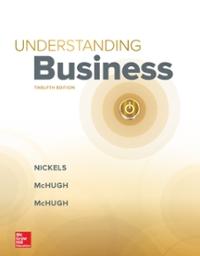Question
Suppose there are two products, so that X is the positive quadrant of the plane (that is, X = R2 or, equivalently, X is the
Suppose there are two products, so that X is the positive quadrant of the plane (that is, X = R2 or, equivalently, X is the set of all ordered pairs (x1, x2)where x1 and x2 are positive real numbers). For example, (1,3) means you consume 1 unit of good 1 and 3 units of good 2. A decision maker makes choices by choosing the most preferred alternative according to the following preferences: (x1, x2) is preferred to (y1, y2) if the following conditions hold:
- x1 > y1 or,
- x1 = y1 and x2 > y2
In words: the combination (x1, x2) is preferred to the combination (y1, y2) of either (a)x1 > y1 OR (b) x1 = y1 and x2 = y2. For instance, (3, 1) is preferred to (2, 7) because 3> 2, while (5, 2) is preferred to (5, 1) because 5 = 5 and 2 > 1. Show that these preferences (called lexicographic) are indeed a preference. That is, they are asymmetric and negatively transitive.

Step by Step Solution
There are 3 Steps involved in it
Step: 1

Get Instant Access to Expert-Tailored Solutions
See step-by-step solutions with expert insights and AI powered tools for academic success
Step: 2

Step: 3

Ace Your Homework with AI
Get the answers you need in no time with our AI-driven, step-by-step assistance
Get Started


